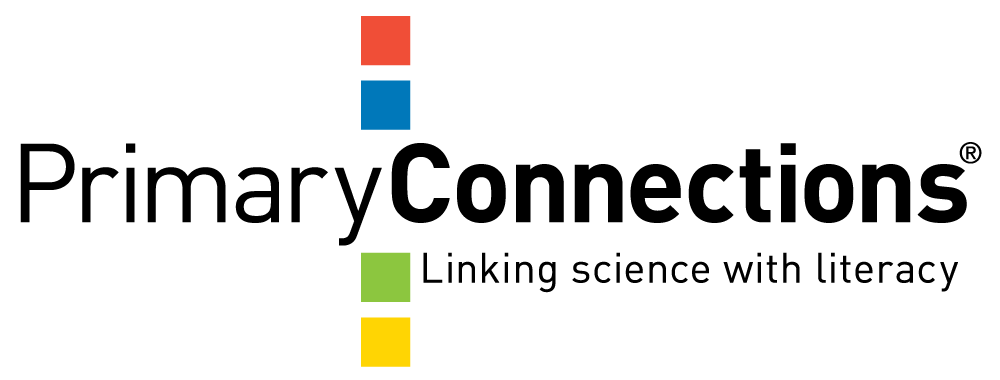Introduction
Using a design portfolio allows students to be engaged in an authentic opportunity to resolve a design challenge. Students can use their design portfolio as a self-assessment tool as they reflect on their learning and how their ideas have changed and developed during a unit.
Monitoring students’ design portfolios allows you to identify students’ non-scientific ideas, find evidence of students’ learning and plan future learning activities in science, design technologies, and literacy.
A design portfolio is organised to facilitate the dynamic, reiterative nature of the design process and supports students’ skills in design thinking, processes and production:
- Investigating and defining
Students identify with the design challenge and use this stage to explore and review the design brief. They identify critical factors for success. For example, if you are teaching Primary Connections Unit ‘Package it better’, students identify possible fragile gifts and explore, record and reflect on their exploration of package characteristics and designs which will safely deliver a fragile gift. students define the task by reviewing the design brief and specifying the design criteria for their solution. They identify appropriate materials and processes to use. - Generating and designing
Students plan for, document and record their ideas about how they could make an effective product or solution. - Producing and implementing
Students explore proposed solutions to develop their capabilities for selecting appropriate materials. Prototypes are designed and created. Evaluating Students record their evaluation of their prototype, product or solution and the processes involved. They reflect upon their learning. - Collaborating and managing
By working in collaborative teams students are able to communicate and compare their ideas with one another, build on one another’s ideas, discuss and debate these ideas, revise and rethink their reasoning.
Each stage of the design portfolio is described below and aligns to Australian Curriculum: Design and Technologies.
Using a design portfolio
Provide students with a dedicated notebook, or folder, to which new pages can be added during the design process.
- When introducing a design portfolio to students emphasise the importance of including pictorial representations as well as written entries. Entries can include narrative, poetry and prose as students represent their ideas in a range of styles and forms.
- Explain to students that they will use their design portfolio to keep dated records of their observations, ideas and thoughts about all activities, adding them to the appropriate section.
- Use a large project book or A3 paper in a large ring binder to make a class design portfolio. This can be used at all year levels to model design portfolio entries.
- Make time to use the design portfolio in each lesson. Provide opportunities for students to plan procedures and record predictions and their reasons for predictions before an activity.
- Provide guidelines in the form of questions and headings and facilitate discussion about recording strategies, such as note-making, lists, summaries, tables and concept maps. Use the class design portfolio to show students how they can modify and improve their recording strategies.
- Refer students to display charts, pictures, diagrams, word walls and phrases about the topic displayed around the classroom. Revisit and revise this material during the unit. Explore the vocabulary, visual texts and ideas that have developed from the unit, and encourage students to use them in their design portfolio.
- Use the design portfolio to assess student learning in science, design and technologies, and literacy. For example, during the Engage phase, use design portfolio entries for diagnostic assessment as you identify students’ prior knowledge. This allows you to take account of students’ existing ideas when planning future learning experiences.
- Discuss the importance of entries in the design portfolio during the Explain and Evaluate phases. Demonstrate how the information in the design portfolio will help students develop literacy products, such as posters, brochures, letters and oral or written presentations.
Design thinking, processes and production
Investigating and defining
Students record information from their explorations which might assist them through the design process. Students have the opportunity to:
- recognise the design challenge.
- investigate materials and designs used in commercial situations to examine existing ideas and meet new ones.
- describe and name how the examples explored relate to their design challenge.
- describe what they have learned during exploratory investigations and how they could apply it to their design.
- Students record the design brief and develop a list of design criteria and the materials needed to make their product or solution. It includes:
- the design brief
- the design criteria
- a list of options against design criteria and a materials list
- what to explore to inform the design process
- articulate the critical factors for the success of the design, to inform development of the design criteria.
Generating and designing
Students:
- conduct some simple tests to compare their initial ideas for meeting the design brief.
- gather information to make informed decisions about their designs.
- develop a plan and write a procedure for producing the product
- draw an annotated design sketch
Producing and implementing
Students collect ideas about how they will make their designed product or solution. This includes diagrams and ideas, including steps in the procedure, and is where students:
- produce a prototype according to design considerations and criteria
- prepare a presentation.
Evaluating
This is where students record ongoing evaluation that occurs throughout the science inquiry. It includes evaluation of materials, designs, ideas and processes, and is an opportunity for students to:
- make dated chronological entries as they reflect on their learning throughout the inquiry, including diagrams, sketches, tables and graphs
- evaluate against the criteria
- evaluate the design process and products to determine ideas for improvement
- record new learning and reflect on their progress throughout the inquiry, including self-assessment
- compare ideas and findings with initial predictions and reasons and provide evidence that supports their ideas, reasons and reflections.

